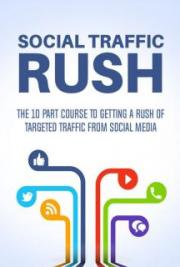FOOTNOTES:
CHAPTER 1
1 This content is available online at <http://cnx.org/content/m43627/1.1/>.
2 Derryberry, D., + Klevjord, M. "Arousal, Affect, and Attention as Components of Temperament" Journal of Personality and Social Psychology 1988, Vol. 55, No. 6,958-966
3 D. Snygg and A. W . Combs, Individual Behavior. New York: Harper, 1949. Pp. 110-111.
4 Lindgren, Henry Clay , (1959). Psychology of personal and social adjustment (2nd ed.)., (pp. 44-65). New York, NY, US: American Book Company
CHAPTER 2
1 This content is available online at <http://cnx.org/content/m43629/1.1/>.
2 Retrieved from http://webspace.ship.edu/ambart/PSY_220/selfschemaol.htm 6/7/2012
3 Marks, G. (1984). Thinking one’s abilities are unique and one’s opinions are common. Personality and Social Psychology Bulletin, 10, 203-208.
4 Wegner, D. M. (1994). Ironic processes of mental control. Psychological Review, 101, 34-52.
5 Botvinick, M., Braver, T., Barch, D. Carter, C. + Cohen, J. (2001). Conflict monitoring and cognitive control. Psychological Review, 108 (3), 624-652
6 Eysenck, M. W. and Calvo, M.G. (1992). Anxiety and performance: the processing efficiency theory. Cognition and Emotion, 6, 409-434.
7 Eysenck, M. W., Derakshan, N., Santos, R., + Calvo, M.G. (2007). Anxiety and cognitive performance: Attentional control theory. Emotion, 7(2), 336-353.
8 Posner, M. I., + Peterson, S. E. (1990). The attention system brain. Annual Review of Neuroscience, 13, 25-42.
CHAPTER 3
1 This content is available online at <http://cnx.org/content/m43630/1.1/>. Available for free at Connexions
2 Clark, M. S., + Isen, A. M. (1982). Towards understanding the relationship between feeling states and social behavior. In A. H. Hastorf + A. M. Isen (Eds.), Handbook of social cognition (2nd ed.), New Jersey: Erlbaum.
3 Isen, A. M. (1984). Towards understanding the role of affect in cognition. In R. S. Wyer + T. K. Srull (Eds.) Handbook of Social Cognition (Vol 3. pp. 179-236). Hillsdale, Nj: Erlbaum.
4 Isen, A. M. (1987). Positive affect, cognitive processes and social behavior. In L. Berkowitz (Ed.), Advances in experimental social psychology (Vol. 20, pp. 203-253). New York: Academic Press.
5 Schwarz, N. (1990). Feelings as information: Informational and motivation functions of affective states. In E. T. Higgins + R. Sorrentino (Eds.), Handbook of motivation and cognition: Foundations of social behavior (Vol. 2, pp. 527561). New York: Guilford Press.
6 Bless, H. (2000). The interplay of affect and cognition: The mediating role of general knowledge structures. In J.P. Forgas (Ed.). Feeling and Thinking: The role of affect in social cognition. New York: Cambridge University Press.
7 Fiedler, K. (2000). Towards an integrative account of affect and cognition phenomena using the BIAS computer algorithm. In J. P. Forgas (Ed.) Feeling and thinking: The role of affect in social cognition New York: Cambridge University Press.
8 Arnold, M. B. (1960). Emotion and personality (2 vols.). New York: Columbia University Press.
9 Smith, C. A., + Lazarus, R. S. (1990). Emotion and adaptation. IN L. A. Pervin (Ed.) Handbook of personality: Theory and research (pp. 609-637). New York: Guilford Press.







